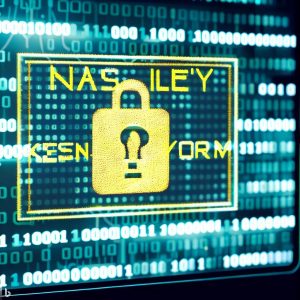Ransomware attacks are not new, but they continue to evolve and cause havoc for individuals and organizations alike. One of the latest forms of ransomware making waves in the cybersecurity world is New Money Message. In this article, we’ll take a closer look at what New Money Message is, how it works, and what you can do to protect yourself.
What is New Money Message ransomware?
New Money Message is a type of ransomware that encrypts files on a victim’s computer and demands a ransom in exchange for the decryption key. The ransomware gets its name from the ransom note that is displayed on the victim’s screen, which includes a message instructing the victim to send a certain amount of money to a specified Bitcoin address.
How does New Money Message ransomware work?
Money Message ransomware is typically distributed via phishing emails, which are designed to look like legitimate messages from trusted sources. Once a victim clicks on a link or opens an attachment in the email, the ransomware is installed on their computer.
Once installed, the ransomware begins to encrypt files on the victim’s computer, rendering them inaccessible. The ransom note is then displayed, demanding payment in exchange for the decryption key. The amount of the ransom varies, but it typically ranges from a few hundred to several thousand dollars.
What can you do to protect yourself from New Money Message ransomware?
Like other forms of ransomware, New Money Message can be devastating for individuals and organizations. However, there are steps you can take to protect yourself:
- Be vigilant about phishing emails: One of the most common ways that ransomware is distributed is through phishing emails. Be wary of unsolicited emails, especially those that include links or attachments.
- Keep your software up to date: Outdated software can be vulnerable to attacks, so make sure that you regularly update your operating system and all of your software applications.
- Use antivirus software: Antivirus software can help detect and prevent ransomware attacks. Make sure that you have up-to-date antivirus software installed on your computer.
- Backup your files: Regularly backing up your files can help you recover from a ransomware attack without having to pay the ransom.
- Educate yourself: Stay informed about the latest threats and trends in cybersecurity. There are many resources available online that can help you stay up-to-date and informed about the latest threats.
Ransomware is a serious threat that can cause significant harm to individuals and organizations. By taking steps to protect yourself, you can reduce the risk of falling victim to this and other forms of ransomware. Stay vigilant, stay informed, and stay safe.
Read more about it HERE
For more information on how we can help you from a ransomware disaster click HERE